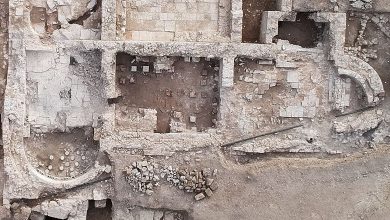Mysteries of terracotta figurines from the village of Nok

In 1928, on the Atlantic coast of Africa, in Nigeria, on the Jos plateau, where many mines have appeared since the beginning of the last century, Colonel John Dent Young accidentally found fragments of terracotta figurines during blasting. Thanks to them, Africa appeared before scientists from an unexpected angle.
Sometimes it happens that we learn about the existence of civilization by completely random finds. Not all objects of material culture “survive” to scientific research. Metal figurines and tools are often melted down, wood burns, and rots, it is the first to die during enemy raids. Clay products, if they are not broken, are more lucky – they can lie in their grave for a millennium. The terracotta figurines from the village of Nok were lucky to have survived.
Colonel Dent was especially shocked by the tiny head of a monkey and the equally small head of an African woman. He also found a pair of female clay legs. Brought up on the fact that all art in Africa is Egyptian, the colonel handed over the finds to the local history museum of the city of Jos.
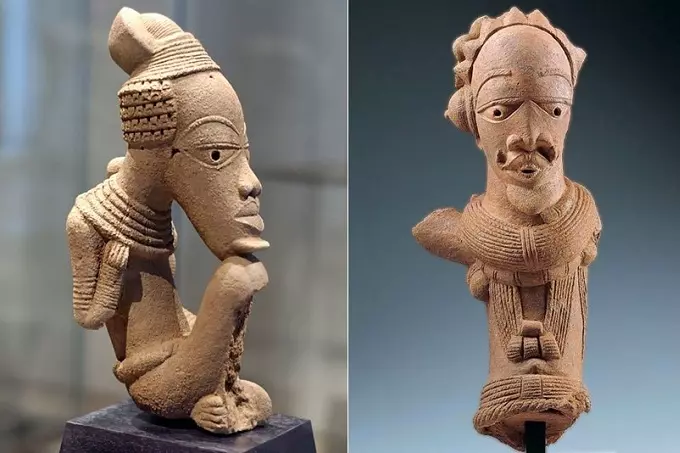
Unfortunately, no one was interested in them. How could these finds compete with the discovery of Howard Carter and Lord Carnarvon – the tomb of Pharaoh Tutankhamen? It’s only been five years.
In 1932, the same museum in Jos received a new portion of artifacts: during the laying of the cable, workers found about a dozen more terracotta figurines. Museum workers did not pay any attention to them. At that time, there was a belief that art and civilization were unique to the Egyptians and Nubians. The tribes of Nigeria did not reach the cultural level of the Egyptians. It was enough to look at them.
However, the savages coped well with labor in the mines. It was 1943. The Second World War hardly affected Nigeria. Mines and miners worked without interruption. Once, the head of one of the mines, inspecting his workers, saw a strange-looking scarecrow in the garden of a miner: he fastened a ceramic head of amazing beauty wrapped in rags on a pole.
After questioning the miner, he learned that the figurine was found in the mine. The boss immediately offered to buy the scarecrow, the owner agreed. So he became the happy owner of the statuette, later called “the girl from the village of Nok.”
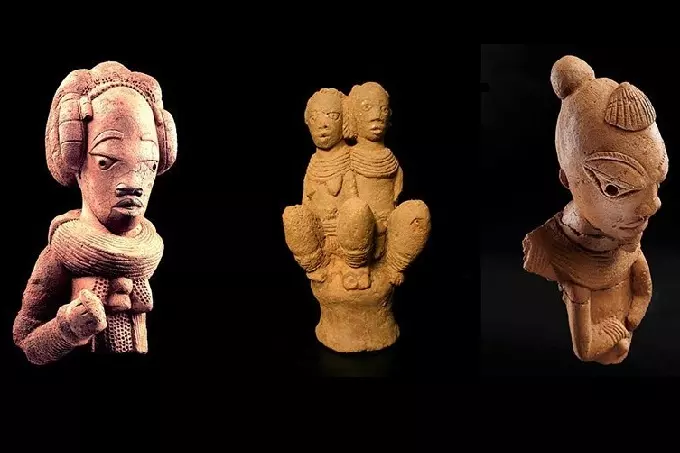
The head of the mine himself knew little about art, but he knew a man who was fond of archeology, the Englishman Bernard Fagg, an employee of the civil administration. As soon as the chief unfolded the rag in which he brought the mined, Fagg immediately determined the significance of the find. He had never seen anything like it before.
This product was not similar to any African find. In addition, it became clear to Fagg that the artifact was ancient. And with a tremor in his voice, he asked to be declared working in the mines, so that they would not throw away the finds and break them, but bring them and hand them over to the management.
After a couple of months, he already had 50 artifacts. Fagg made a presentation at a scientific conference. The culture, which he singled out as previously unknown and completely original, he called the Nok culture – according to the first finds in the mentioned village.
Then there were other places and other finds. Together with his wife, Angela Bernard, he conducted research in Central and Northern Nigeria. Most of the finds were spontaneous – in dumps, in dry river beds, during mining. The Faggs managed to get a couple of hundred more figurines.
The temporal spread of finds from Nigeria is very large – from 900 BC to 200 AD. But all these artifacts are distinguished by the unity of style and material. They are made of terracotta, that is, clay, without a potter’s wheel and other technical devices.
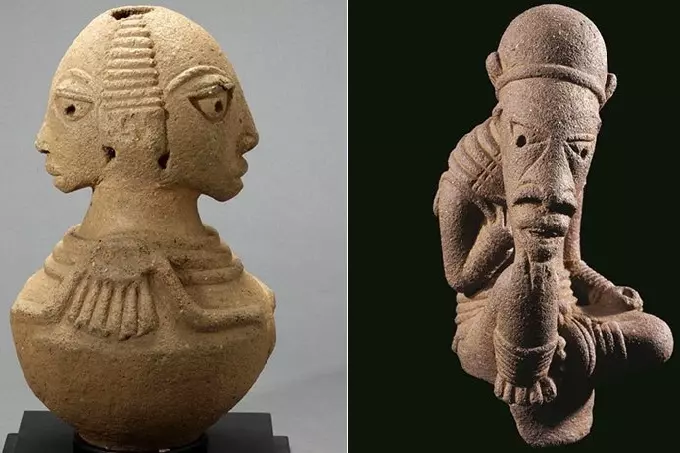
Masters molded these products with their hands and brought them to perfection with their hands. Then the artifacts were fired in kilns, or open firing was practiced. Eyebrows and hairstyles were applied at the last stage of modeling.
Basically, these finds are male and female portraits of small size, but with extraordinary detail: in hairstyles, you can distinguish individual locks of hair and curls, the smallest parts of jewelry, folds of headbands, etc. Some heads resemble Egyptian ones, others have completely African features, but it is impossible to confuse the execution-style: even supposedly Egyptian figurines were made by masters of the conventional Nok culture.
Moreover, the belonging of the products to this culture immediately betrays the fact that the heads of the figurines are disproportionately large for the bodies on which they are planted, and the bodies are given in such a dynamic turn, which is more typical for a theatrical performance than for everyday life.
The faces themselves also have very specific features: they have exaggerated, elongated skulls (for example, the Mangbetu people still deform the heads of their babies), triangular eyes with a hollow in the center, triangular eyelashes, uniform mouths, and cut nostrils.
High hairstyles, which are endowed with sculptures, are typical for the Baluba people. Exaggerated facial features are still depicted on ritual masks by people of the Ibibio tribe. And the Yoruba people draw triangular eyes with triangular eyelashes. However, none of the listed modern cultures converges all the distinctive features of the Nok culture.
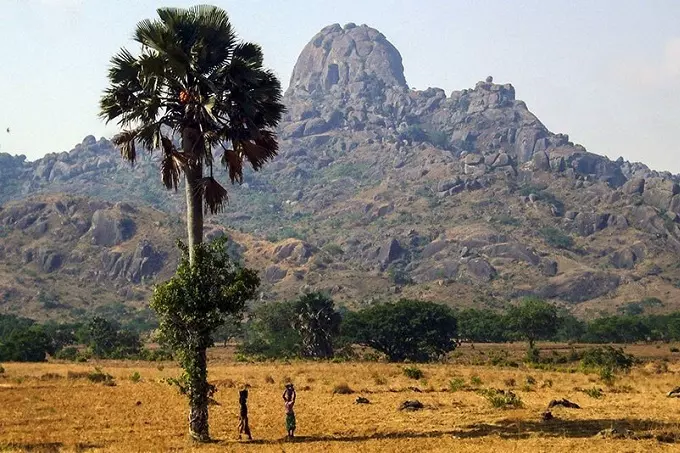
A simple question arises: if in the deepest antiquity, the distinctive features mentioned above were combined in each artifact, and now they are present one at a time in several African cultures, then what happened? There can be only one explanation: what is usually called the Nok culture (or Nok civilization) has never been the culture of one people.
Nok culture is a culture of a union of tribes united for some reason. The tribes converged, lived together on the same territory for more than 1000 years, and dispersed again without becoming a nation. It turns out that it happens. And having dispersed, they took with them into the future only individual features characteristic of them from the general art of Nok.
As a rule, tribal alliances exist as long as they pursue common military or economic goals. Goals change – alliances break up, which probably happened. But the peoples themselves have not gone anywhere. It’s just that each tribe went its own way and did not take other distinctive features into its art.
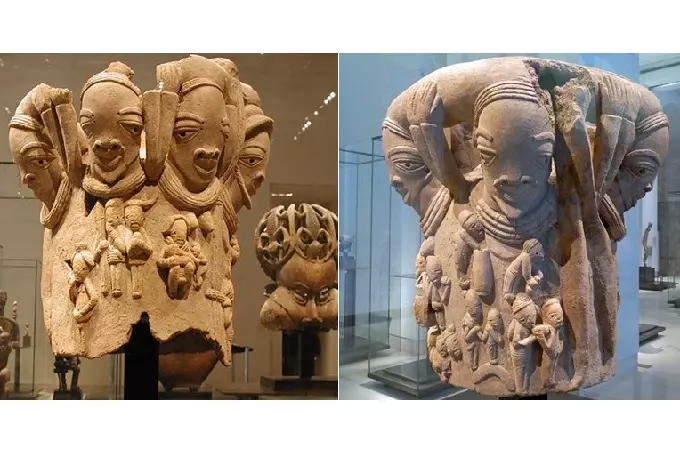
From that 1000-year period of African history, these terracottas, some ceramics, some household items, jewelry, and the tools and arrowheads common to all early civilizations have come down to us. The territory, which is considered the area of distribution of the Nok culture, is the central and northern part of modern Nigeria, it is determined by the places where artifacts were found.
It is known that the masters of Nigeria were able to sculpt not only terracotta sculptures, they also knew the secrets of making metal figurines. They used the technique of the so-called lost wax, when a thick layer of wax was applied to a clay blank, on which the model was worked out in detail, then the wax layer was covered with a new layer of clay, in which a gap was left for pouring molten metal. After pouring, the wax melted and flowed out, and a heavier metal took its place. It only remained to break the mold and bring the product to perfection.
With the collapse of the union of tribes, the technique of the masters of the Nok culture was not lost. At the beginning of the 2nd millennium, the secrets of craftsmanship and the characteristic features of this culture were suddenly discovered in the city of Ife. There, archaeologists found a bronze figurine that exactly repeats the artifact of the Nok culture. But between these products – many centuries.

This fact is explained simply: the characteristic style in Ife was brought with them by settlers who knew the traditions of the Nok culture. Traces of the Nok culture are clearly visible in the culture of Benin. Only the answer to one question is unclear: how did the Nok culture itself appear?
So far, no artifacts have been found that should have preceded perfect products. None. As if this culture, as one of the archaeologists admitted, once taken and fell from the sky.




